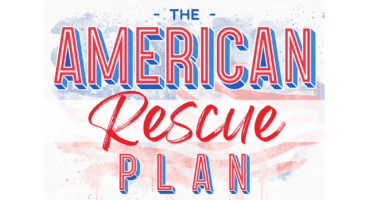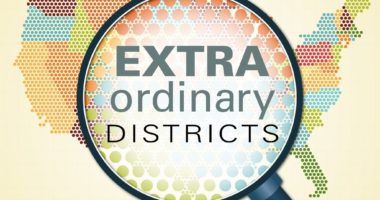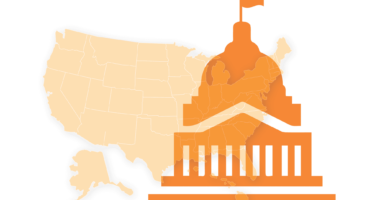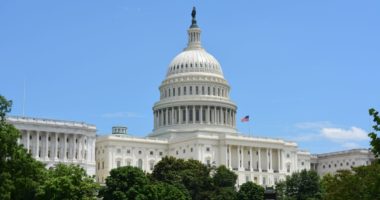What the American Rescue Plan Act of 2021 Means for Tennessee
On March 11th, 2021, President Biden signed the American Rescue Plan Act of 2021 (ARP) into law, providing $1.9 trillion in COVID-19 relief funding.[1] This package contains nearly $122.8 billion for the K-12 education system, roughly $40B for the higher education system, makes some changes to existing COVID relief distribution mechanisms, and provides several other funding streams related to education.[2]
Additional Funding for Education
Similar to the CARES Act structure that was also maintained by the Coronavirus Response and Relief Supplemental Appropriations Act (CRRSA), the ARP Act provides an additional $165 billion through a modified Education Stabilization Fund (ESF) which includes three main funding streams – the Elementary and Secondary School Emergency Relief Fund (ESSER III), the Higher Education Emergency Relief Fund (HEER III), and the Emergency Assistance to Non-Public Schools (EANS).[3] Unlike prior relief packages, the Outlying Areas and Bureau of Indian Education will each receive $850 million in appropriations through funding streams other than the ESF.[4] Unlike the CARES and CRRSA Acts, the bill does not provide additional funding for the Governor’s Emergency Education Relief Fund (GEER).[5]
The law includes two critical fiscal policies: maintenance of effort and maintenance of equity designed to protect the most underserved students from disproportionately harmful cuts experienced in past recessions. As a condition of receiving funds, states are now required to:
- Maintain effort:
- Ensure that spending for K-12 education and higher education represents at least the same share of total state spending in FY22 and FY23 as it did, on average, in FY17, FY18 and FY19
- Maintain equity:
- Ensure that any cuts to state funding in FY22 and FY23 for “high-need” school districts are less than the overall reduction in state funding across all districts in the state, on a per-student basis. High-need districts are defined as the districts with the highest percentages of economically disadvantaged students that collectively serve 50% of the state’s students.
- Ensure that “high-poverty” school districts receive at least as much state funding in FY22 and FY23 as in FY19, on a per-student basis. High-poverty districts are districts with the highest percentages of economically disadvantaged students that collectively serve 20% of the state’s students.
- Ensure that districts do not reduce funding or staff in any high-poverty school in a manner that exceeds the total reduction in district funding or staff or all schools, on a per-student basis. A high poverty school is defined as a school that is in the top 25% of schools in the district based on the percentage of economically disadvantaged students. Districts are exempt from this requirement if they:
- Have fewer than 1,000 students
- Operate a single school
- Serve all students in each grade span in a single school
- Demonstrate an exceptional or uncontrollable circumstance as determined by the Department of Education
The three major education funding streams within the Education Stabilization Fund are described below.
The Elementary and Secondary School Emergency Relief Fund (ESSER III) includes almost $122.8 billion in federal funding, of which Tennessee is eligible for nearly $2.5 billion.[6] Funds will be distributed to states and then to districts based on the share of funding they receive under Title I of Elementary and Secondary Education Act (ESEA), which is used to allocate federal education funding to students from low-income families.[7]
At the state level, state educational agencies (SEAs) must reserve five percent of their allocation to address “learning loss”, reserve one percent for evidence-based summer enrichment programming, reserve another one percent for evidence-based comprehensive afterschool programs, and reserve three percent for administration other state activities to address issues in response to the pandemic. SEAs are required to use the remaining ninety percent to award subgrants to districts across the state.[8]
District use of ARP funds largely remains the same as under the CARES and CRRSA Acts. Allowable uses include: addressing interrupted instruction, preparing schools for physical reopening, purchasing education technology, providing mental health supports, and other activities authorized under existing law.[9] Districts must also use at least 20% of funds to address “learning loss”.[10] Estimated district allocations for Tennessee can be found here.
All funds must be allocated and spent by September 30, 2024.[11]
The Higher Education Emergency Relief Fund (HEER III) consists of nearly $39.6 billion in federal funding, of which Tennessee will be eligible for over $702 million.[12] Ninety-one percent of these funds will be distributed directly to public and private non-profits institutions and postsecondary vocational institutions while 7.5% will be distributed thorough minority-serving intuitions (MSIs) such as Historically Black colleges and Universities (HBCUs) and Hispanic Serving Institutions (HSIs).[13] The remaining funds will be split between for-profit institutions and those that have the greatest unmet need related to COVID-19.[14]
Institutions receiving funds will have a wide range of accepted uses, but will be obligated to spend at least the same amount on emergency grants to students as they did with funds allocated by the prior two packages. Additional uses include implementing evidence-based practices to monitor and suppress COVID-19 and conduct direct outreach to applicants about their ability to receive a COVID-19 related financial aid adjustment.[15] Estimated allocations for individual institutions in Tennessee, including the minimum amount reserved for student aid, can be found here.
Lastly, a $2.75 billion allocation is reserved for the Emergency Assistance to Non-Public Schools Program (EANS) to provide services or assistance to non-public schools that enroll large proportions of low-income students.[16] These funds cannot be used to provide reimbursements to any non-public school.[17] Allowable uses for EANS funds remain the same from the CRRSA Act, including personal protection equipment, educational technology, and reimbursement for expense non-public schools incurred during the pandemic.[18]
Other Education Allocations
In addition to these major funds, the ARP Act also allocated $7.1 billion for home broadband connectivity and devices for K-12 students through the E-Rate program, $1 billion to states to fund Head Start programs, $14.9 billion for the Child Care and Development Block Grant, another $23.9 billion for child care stabilization funding, and increased the Child Tax Credit.[19] It also allocates an additional $3 billion into programs funded through the Individuals with Disabilities Education Act and $1 billion for the Corporation for National Community Service and the National Service Trust to increase the amount of tutors trained through AmeriCorps.[20]
Finally, the ARP Act extended the 15% increase in SNAP benefits through September 2021 and authorized the Pandemic EBT program to operate throughout the duration of the COVID-19 pandemic as well as during any school year and subsequent summer in which a public health emergency is declared.[21]
[1] Congress of the United States of America, American Rescue Plan Act of 2021, March 2021. https://www.congress.gov/117/bills/hr1319/BILLS-117hr1319enr.pdf
[2] Ibid
[3] Ibid
[4] Ibid
[5] Rebecca R. Skinner, Joselynn H. Fountain, Cassandira Dortch, and Emma C. Nyhof, “Estimated FY2021 Grants to States and Institutions of Higher Education Under the Education Stabilization Fund Based on the Senate-Passed Substitute to H.R. 1319,” (Washington D.C.: Congressional Research Service, March 2021). https://www.democrats.senate.gov/imo/media/doc/CD%20memo_ESSER_EANS_HEERF_Senate%20passed%20sub%20to%20HR1319_3-8-21.pdf
[6] Ibid
[7] Ibid
[8] Ibid
[9] Congress of the United States of America, American Rescue Plan Act of 2021, March 2021. https://www.congress.gov/117/bills/hr1319/BILLS-117hr1319enr.pdf
[10]Ibid
[11] Rebecca R. Skinner, Joselynn H. Fountain, Cassandira Dortch, and Emma C. Nyhof, “Estimated FY2021 Grants to States and Institutions of Higher Education Under the Education Stabilization Fund Based on the Senate-Passed Substitute to H.R. 1319,” (Washington D.C.: Congressional Research Service, March 2021). https://www.democrats.senate.gov/imo/media/doc/CD%20memo_ESSER_EANS_HEERF_Senate%20passed%20sub%20to%20HR1319_3-8-21.pdf
[12] Ibid
[13] Ibid
[14] Ibid
[15] Congress of the United States of America, American Rescue Plan Act of 2021, March 2021. https://www.congress.gov/117/bills/hr1319/BILLS-117hr1319enr.pdf
[16] Ibid
[17] Ibid
[18] Rebecca R. Skinner, Joselynn H. Fountain, Cassandira Dortch, and Emma C. Nyhof, “Estimated FY2021 Grants to States and Institutions of Higher Education Under the Education Stabilization Fund Based on the Senate-Passed Substitute to H.R. 1319,” (Washington D.C.: Congressional Research Service, March 2021). https://www.democrats.senate.gov/imo/media/doc/CD%20memo_ESSER_EANS_HEERF_Senate%20passed%20sub%20to%20HR1319_3-8-21.pdf
[19] Congress of the United States of America, American Rescue Plan Act of 2021, March 2021. https://www.congress.gov/117/bills/hr1319/BILLS-117hr1319enr.pdf
[20] Ibid
[21] Ibid










